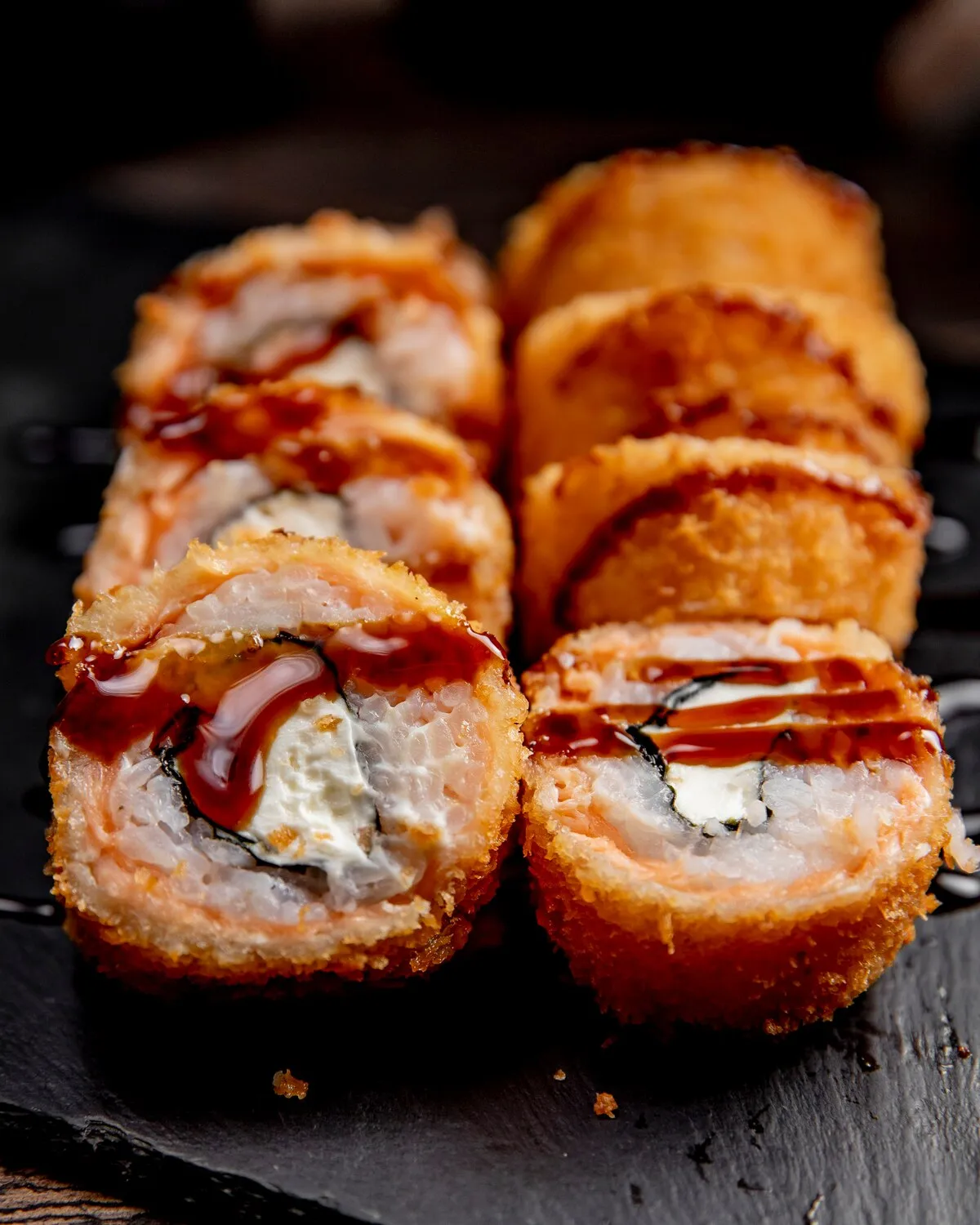
Hot Roll
Fried sushi roll with various fillings.
Nutrition Facts
* The % Daily Value (DV) tells you how much a nutrient in a serving of food contributes to a daily diet. 2,000 calories a day is used for general nutrition advice.
The Hot Roll, also known as a tempura sushi roll or fried sushi roll, is a modern American invention, evolving from the increasing popularity and adaptation of sushi in the United States during the late 20th century. It reflects a fusion of traditional Japanese sushi preparation with Western preferences for fried foods.
Hot Rolls are a prime example of how sushi has been Westernized and adapted to suit local tastes. They represent a departure from traditional Japanese sushi and are often found in Americanized sushi restaurants.
American Adaptation
Hot Rolls highlight the American tendency to adapt and modify ethnic cuisines to suit local palates. The addition of fried elements and creamy fillings cater to American preferences.
Sushi Popularity
The popularity of Hot Rolls has contributed to the overall growth of sushi consumption in the United States, acting as an entry point for those less familiar with traditional raw fish preparations.
Restaurant Innovation
Hot Rolls represent a form of culinary innovation within the sushi context, demonstrating restaurants' efforts to create new and exciting menu items.
The Hot Roll offers a contrasting experience of textures and flavors. The creamy interior fillings mingle with the crispy, savory fried exterior. Common flavor profiles include savory, rich, and slightly sweet notes.
The primary flavors derive from the fillings, which can include cooked fish (such as crab, shrimp, or salmon), avocado, cream cheese, and vegetables. The tempura batter adds a crispy, savory element, while sauces like eel sauce (unagi sauce), spicy mayo, or sriracha introduce sweetness, umami, and heat. The nori seaweed provides a subtle ocean flavor and textural component. The rice adds a starchy base.
Batter Consistency
Use a light and airy tempura batter. Overmixing leads to a dense batter that absorbs too much oil.
Oil Temperature
Maintain the oil temperature between 350-375°F (175-190°C) for even cooking and crisping.
Drying the Roll
Gently pat the sushi roll dry with paper towels before battering to ensure the batter adheres properly.
Sauce Application
Apply sauces sparingly to avoid overpowering the other flavors. Drizzle or lightly brush the sauce onto the roll.
Explore additional Sushi dishes and restaurants
Explore SushiDiscover top dining spots and culinary experiences in Mauá.
Explore MauáLearn more about the food culture, restaurant scene, and culinary heritage of Brazil.
Explore Brazil